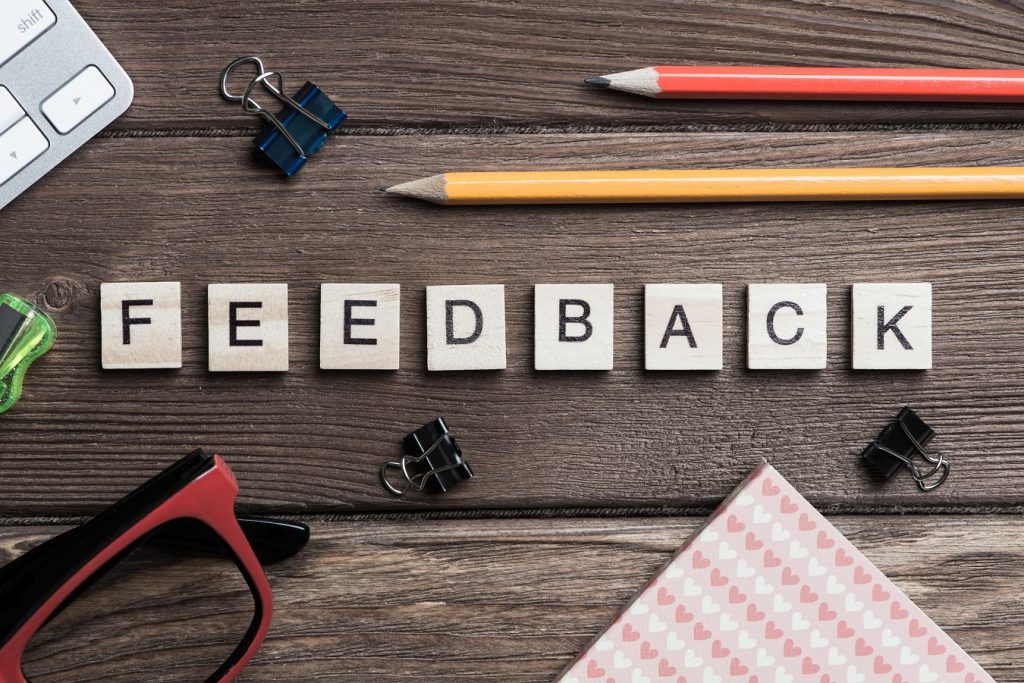How To Handle Negative Feedback
Negative feedback is inevitable. Even if you primarily receive positive reviews, a single unsatisfied customer can leave scathing comments. This can be frustrating, but it doesn’t need to be devastating. Preventing negative feedback from hurting your business should be your top priority. Strategy and proper management of these situations are crucial to minimizing the impact. There are many ways to handle negative feedback to your advantage. Here are a few tips to get you started.

Importance of dealing with negative feedback
Research shows that feedback is a key driver of performance and effectiveness. Negative feedback, especially, can be valuable. It allows you to monitor your performance and alerts you to changes you need to make. Here’s a look at some of the benefits of dealing with negative feedback in your business:

- Customer service: Negative feedback from dissatisfied customers can help you understand inadequacies in product development, the customer service process, and marketing. Moreover, a critical customer will shift your gaze to identifying issues and solving them.
- Sales techniques: In sales, negative customer feedback offers you an opportunity to learn about customer buying needs. You can rework your sales methods to better address those needs.
- Growth: Negative feedback from potential customers in a new target market can help you understand what improvements or changes you need to make to be able to succeed in that new market.

Understanding the customers’ concerns
There’s always the option of ignoring negative feedback. If you opt for this option, however, you’ll never know the reason for the customer’s dissatisfaction. There’s a high chance you won’t resolve the issue effectively, increasing the possibility of a reoccurring mishap.
The best approach is to try and understand their concerns. These questions may help in this quest:
- Why is the customer reacting this way?
- What are they concerned about?
- What did you say/do that provoked them?
The answers to these questions can serve as a starting point for resolving the issue. It’s worth noting that sometimes the agitated customer may not understand the actual areas of concern. You shouldn’t dismiss the feedback in such a situation.
Instead, make a point of probing the customer further to identify what the real reasons are. When you put yourself in the customer’s shoes, it normally becomes easier to understand their concerns.
Respond with acceptance, understanding and an explanation
You may think that the customer knows nothing about your business and is not justified to put up negative reviews. You may even believe the comments are coming from a competitor and not a genuine customer.
Either way, it is important to acknowledge their concerns to get their attention. Tell them you understand their feelings. This is an excellent way to ease up the conversation.
Be sure your response is respectful and sincere. When you respect your customers and handle them in a polite and appreciative manner, you’ll ultimately benefit.
According to experts, if the negative feedback is true, offer a brief apology and a public offering. This can help right the wrong. If the feedback is false, politely and respectfully explain the truth of the matter.
Resolve the issue and prevent it from reoccurring
The most important part of dealing with negative feedback is to get to the bottom of why the issue arose. Make sure you don’t blame anyone but focus on resolving the issue so that it doesn’t happen again.
Conclusion
No business is immune to negative feedback. The stronger your business becomes, the more susceptible it may become to negative feedback. However, the most important thing is not the feedback itself.
It is how you handle the feedback. If you deal with the negative reviews appropriately and politely, your customers will respect you for it. This will help build your credibility and earn your customers’ loyalty.

